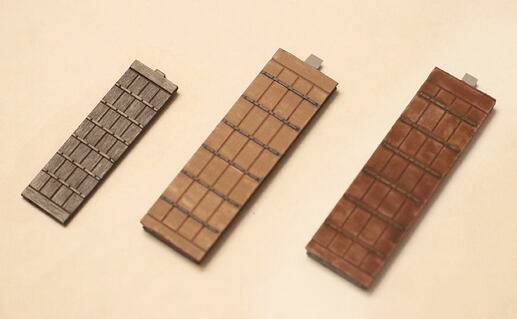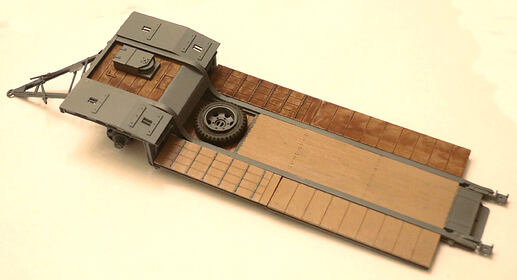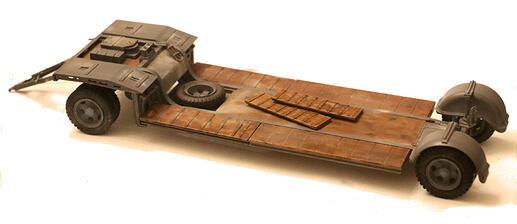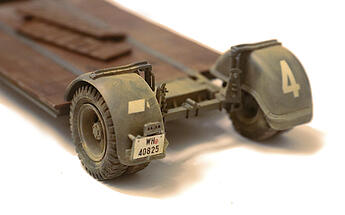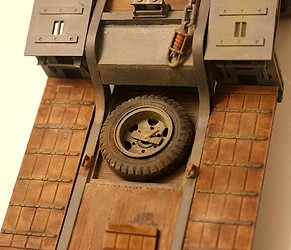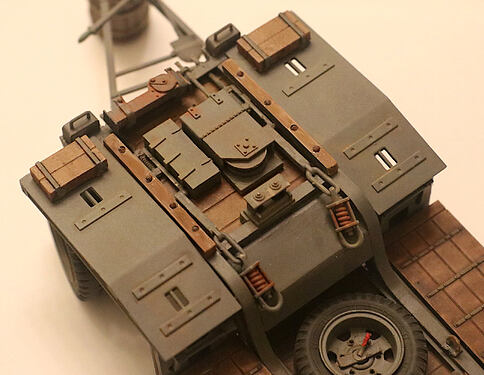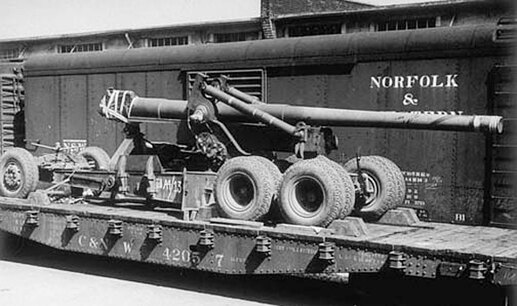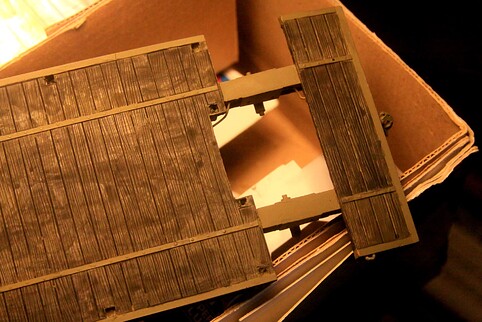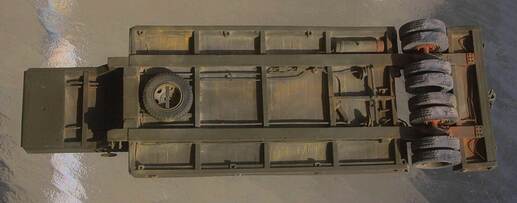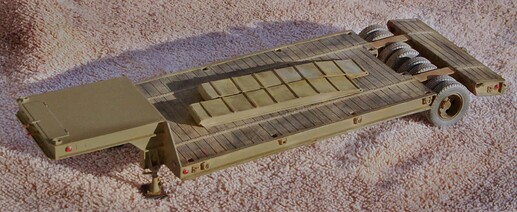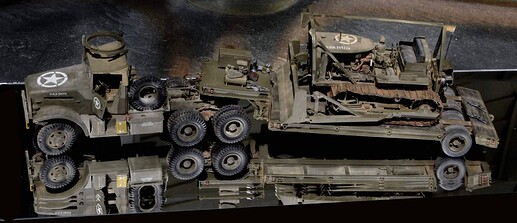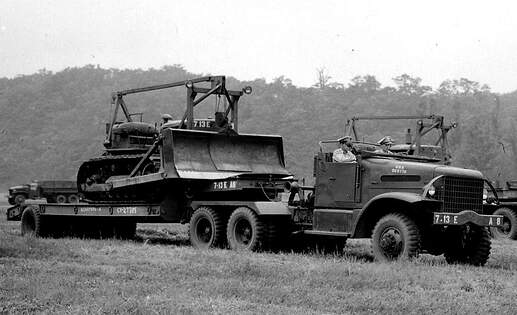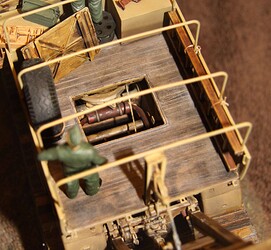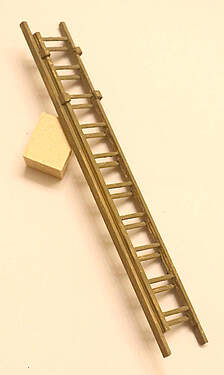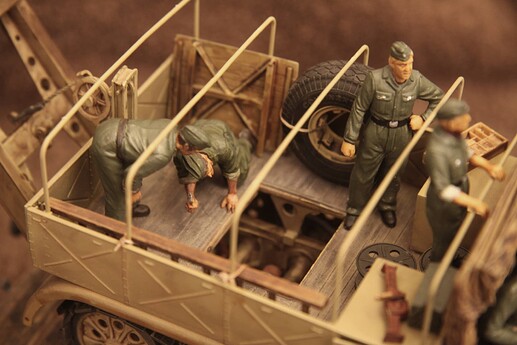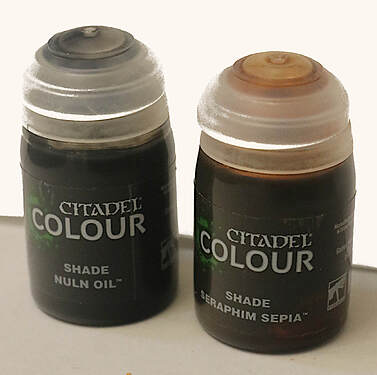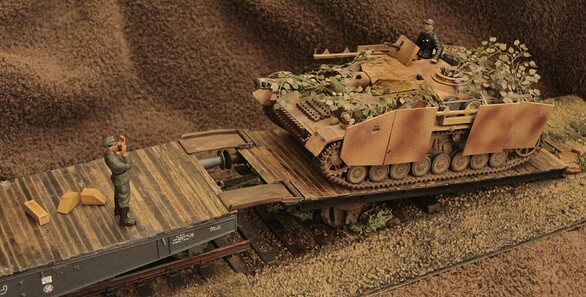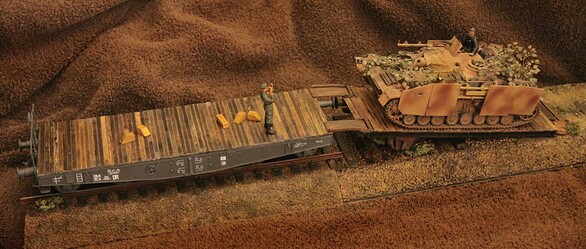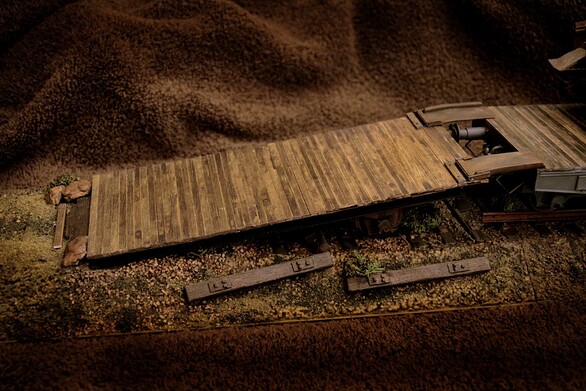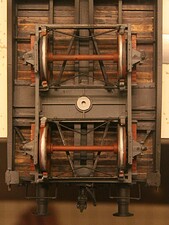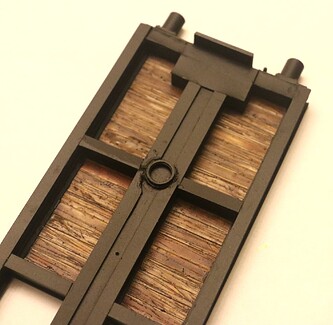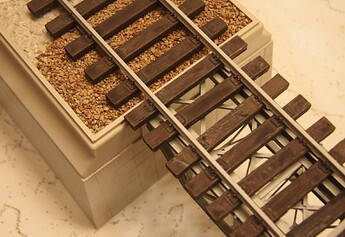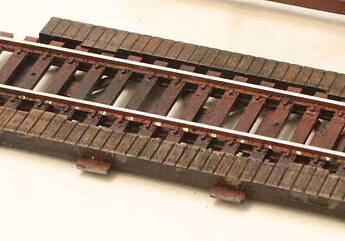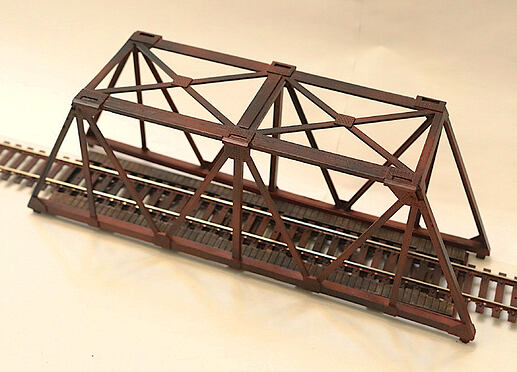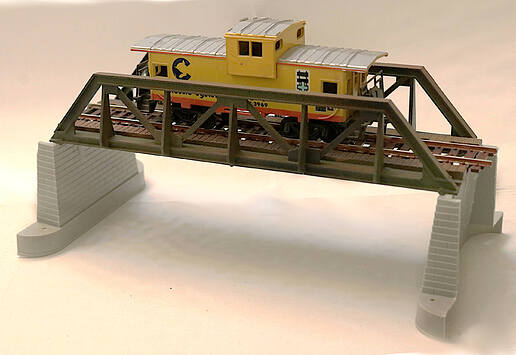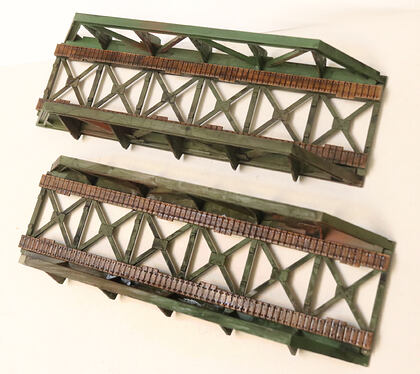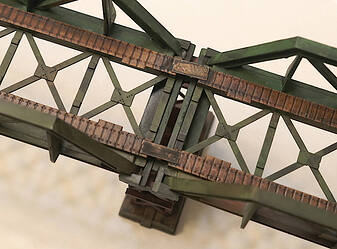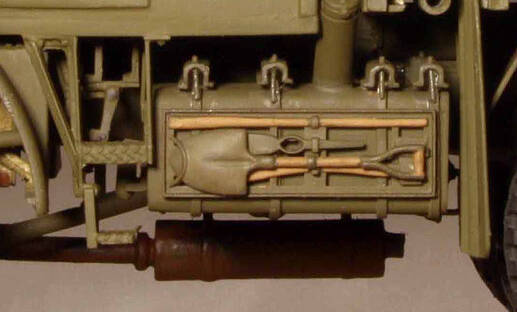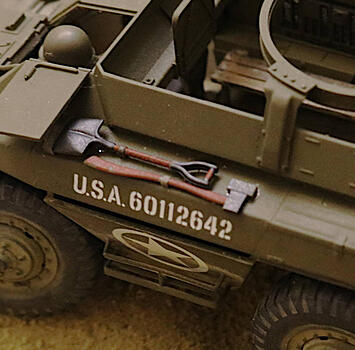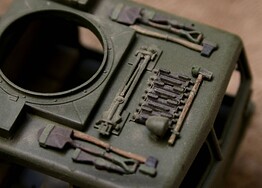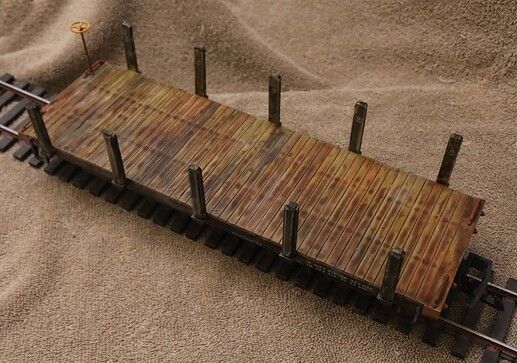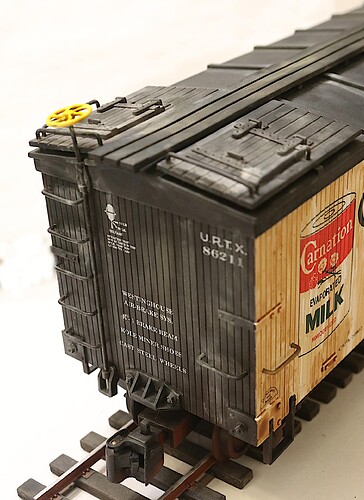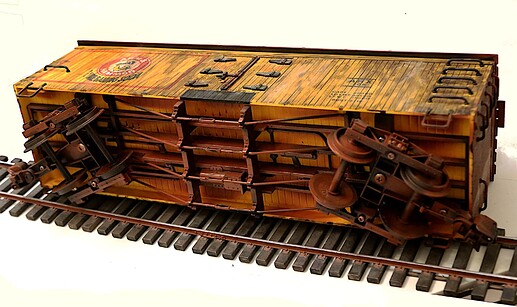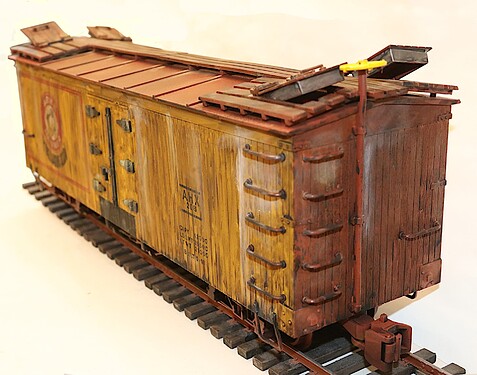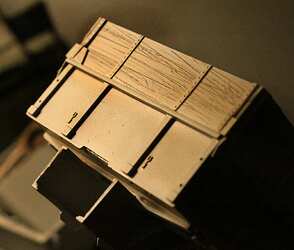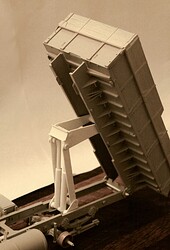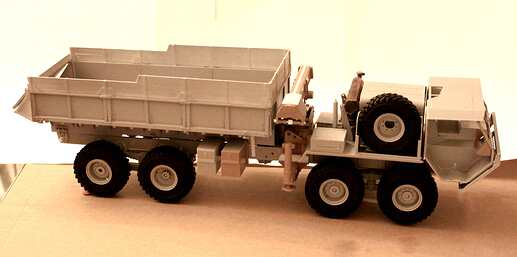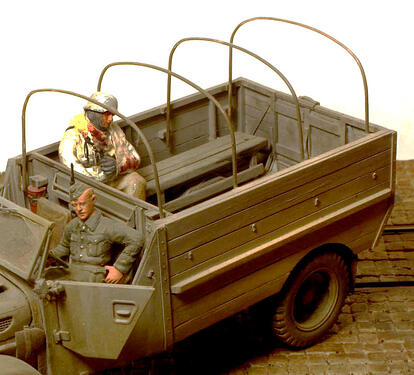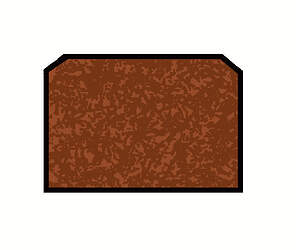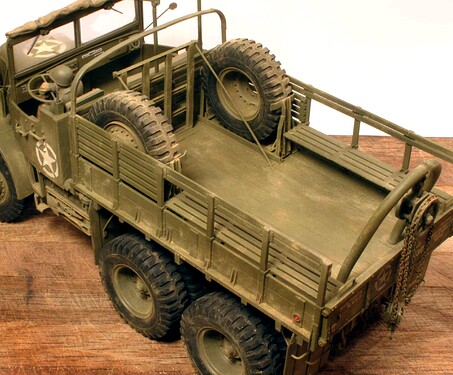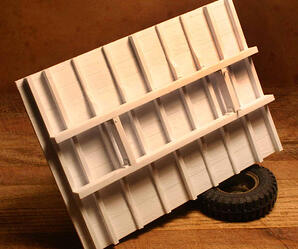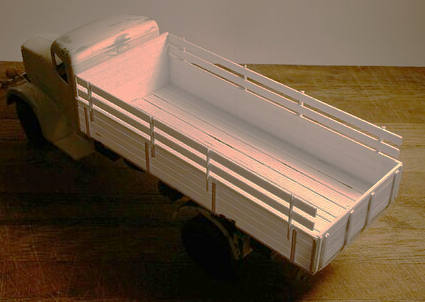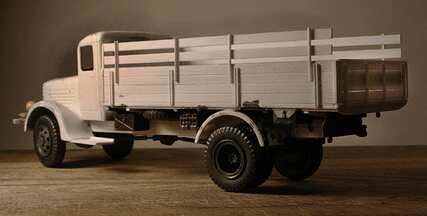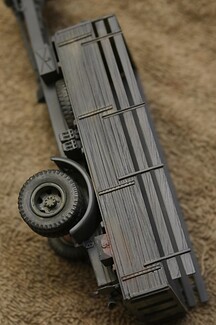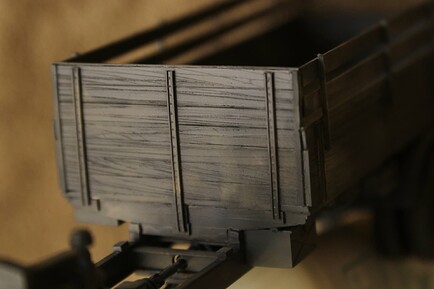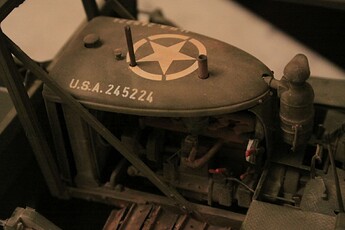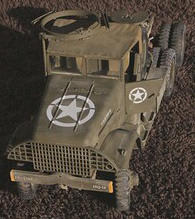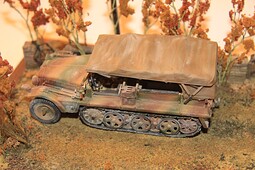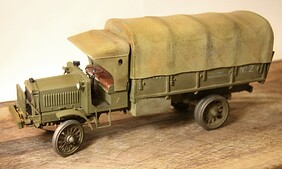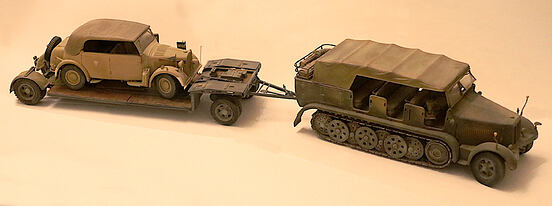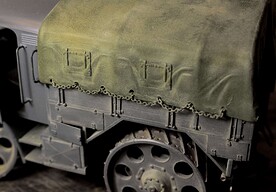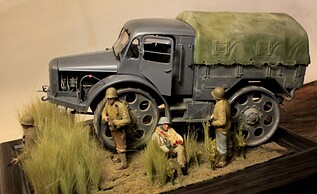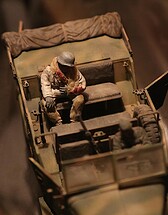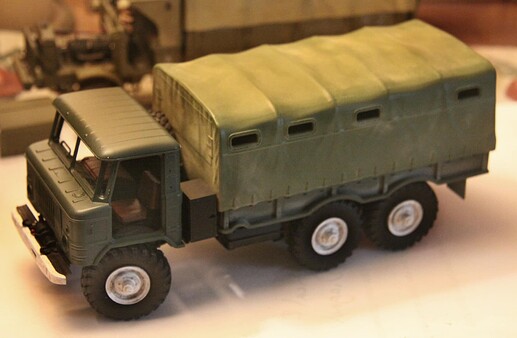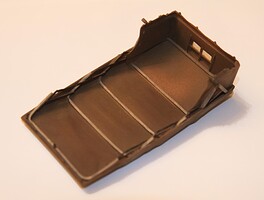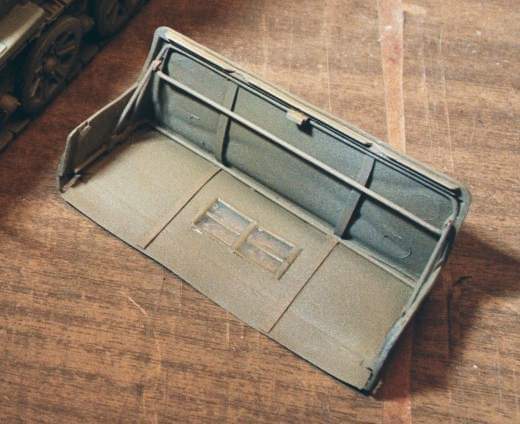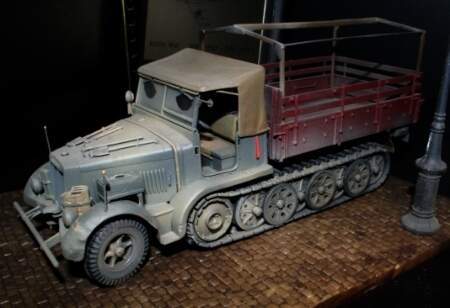Using water based stains and shaders over bare plastic, gloss enamel or oil paints:
Often the smooth glossy surfaces of the bare plastic or the enamel or oil based paints don’t allow the water based stains to properly adhere. The water based products will pool and dry in a blotchy patten.
- not good!
The solution to this is before applying the water based stains, first spray your model with a very dry coating of matte varnish. The rough “tooth” of the matte clear gives the stain (and the Pastels) something to hunker down into and to stay where you want them!
My easy and convenient go-to product for this is “Tamiya’s TS-80 Matte Clear” (rattle can). No muss, no fuss, quick drying and no air brush clean up afterwards. My opinion ~ this is the best matte clear model product in the industry!
Also by “putting it on very dry,” I mean to hold the can well away from the work and let the droplets fall almost dry onto your model work. This will create that very rough, almost microscopic. “tooth” to the surface that I spoke of earlier, and also produce what you may find to be the flatest, mattest, non-reflective surface you may have ever experienced.
p.s. With matte colors one can still put them on too heavy, thereby causing the matte varnish to flow out smoothly to form a semi reflective mirror-like surface.
Especially regarding work with WWII model armor this is *NOT what you are looking for.
(Now if you are doing later Cold War armor this semi-matte surface may be just the thing you are looking for!)
p.s. Matte clear varnish over everything except the windows - then apply shaders and pastels.
p.p.s. Pastels are also great for bringing color modulation to canvas of all types!
SIDEBAR: - (In other words; OFF TOPIC)
. . . Canvas, Canvas, Canvas:
Pastels over a base coat of matte paint are GREAT for this!
and Even More Canvas . . . :
.
F.Y.I. ~ For most canvas I use a base coat of Buff, but for the Skoda RSO I used a Medium Green over-sprayed with a Dark Gray and for the WWI Liberty Truck I actually used German Dark Yellow as my base. Once this has thoroughly dried then ALWAYS a very dry over spray of matte clear to give the pastels something to adhere to.
I also detail the undersides of my canvas tops but that is another subject entirely!
Sd. Kfz.10 Demag 1 ton . . . . . . . . . . . . . Sd. Kfz 7 MWS
. . . and the Demag once again.
(Note scissors supports for the roof ribs.)
My Sd. Kfz. 7 MWS -
Sort of a kit-bash with just a bit of “Paper Panzer” design thrown in. It started life as a Tamiya Flakvierling with then a slightly enlarged load box added from an Italeri Maultier

